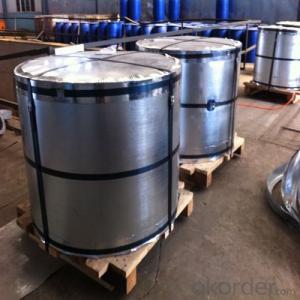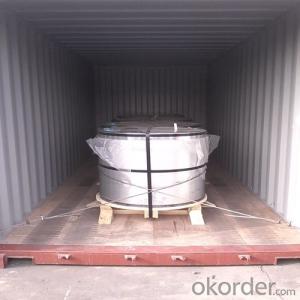Electrolytic Tinplate and TFS for Metal Package of Industrial or Chemical Useage
- Loading Port:
- Shanghai
- Payment Terms:
- TT OR LC
- Min Order Qty:
- 25 m.t.
- Supply Capability:
- 30000 m.t./month
OKorder Service Pledge
OKorder Financial Service
You Might Also Like
Item specifice
1.Structure of Electrolytic Tinplate and TFS for Metal Package of Industrial or Chemical Useage Description
Electrolytic Tinplate, is one thin steel sheet with a coating of tin applied by electrolytic deposition. Tinplate made by this process is essentially a sandwich in which the central core is strip steel. This core is cleaned in a pickling solution and then fed through tanks containing electrolyte, where tin is deposited on both sides. As the strip passes between high-frequency electric induction coils, it is heated so that the tin coating melts and flows to form a lustrous coat.
2.Main Features of the Electrolytic Tinplate and TFS for Metal Package of Industrial or Chemical Useage
Chromium coated
Easier to recycle.
Sulphur Blackening Resistance: TFS has sulphur resistance properties, which can be used for canning protein- rich food such as fish.
Filiform Rust Resistance: Filiform is superficial corrosion of the base metal. TFS has a superior base metal which makes it corrosion resistance.
Paint Adhesion : TFS possesses better paint adhesion properties, thus making it ideal for DRD cans and adhesive bonded cans.
Weldability: TFS can be welded when metallic coating layers are removed by edge grinding.
Internal Coating / Lacquering can be avoided in the case of TFS used to store motor oil or cooking oil.
3.Electrolytic Tinplate and TFS for Metal Package of Industrial or Chemical Useage Images
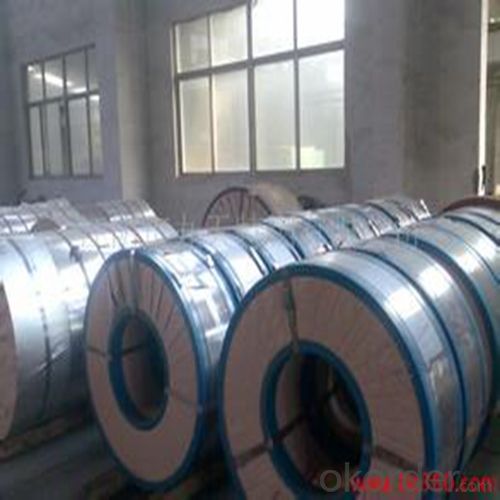
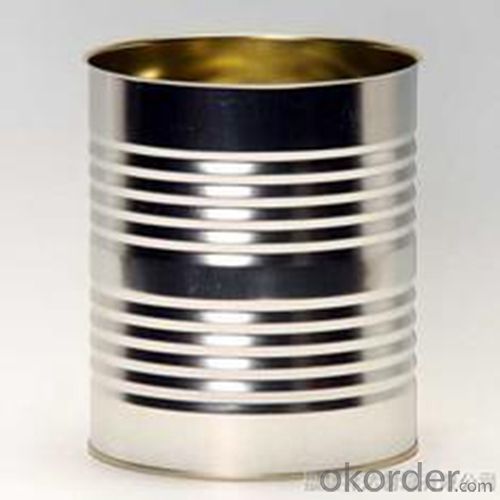
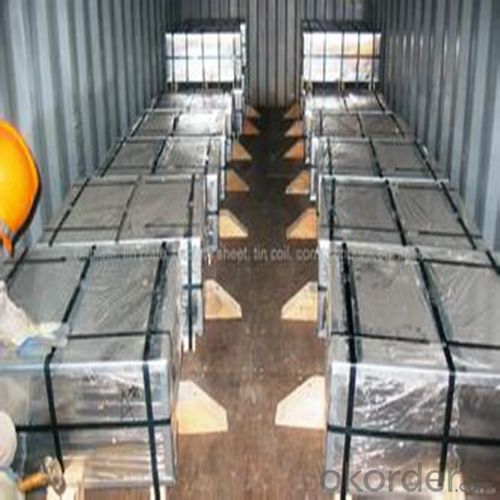
4.Electrolytic Tinplate and TFS for Metal Package of Industrial or Chemical Useage Specification
Specification of :
Standard: ISO 11949 -1995, GB/T2520-2000,JIS G3303,ASTM A623, BS EN 10202
Material: MR,SPCC
Thickness:0.15mm - 0.50mm
Width: 600mm -1150mm
Temper: T1-T5
Annealing: BA & CA
Coil Inner Diameter: 508mm
Weight: 6-10 tons/coil 1~1.7 tons/sheets bundle
Passivation:311
Oil: DOS
Surface: Finish,bright,stone,matte,silver
5.FAQ of Electrolytic Tinplate and TFS for Metal Package of Industrial or Chemical Useage
- How are the tinplates specified?
The tinplates are specified as per the steel base, extent of tempering, the coating weight, annealing method and the surface finish.
- How many types there are for base steels?
The base steels are of three types: Type MR, L, D
- Q:What are the main applications of tinplate in the aerospace industry?
- Tinplate is primarily used in the aerospace industry for manufacturing various components, such as fuel tanks, containers, and protective casings. Its corrosion resistance properties make it ideal for safeguarding against moisture and ensuring the longevity of these critical aerospace components. Additionally, tinplate's lightweight nature contributes to the overall weight reduction of aircraft, enhancing fuel efficiency and performance.
- Q:What's the difference between iron, aluminium, stainless steel, galvanized iron and tin?
- Tinplate is made of iron, but tin is plated on the surface to improve its resistance to oxidation. The price is cheap
- Q:What are the key properties of tinplate?
- The key properties of tinplate include excellent corrosion resistance, high strength, good formability, and the ability to be easily soldered and welded.
- Q:What are the different ways to label tinplate closures?
- There are several different ways to label tinplate closures, including direct printing, pressure-sensitive labels, shrink sleeves, and embossing. Each method offers unique benefits and can be chosen based on the desired aesthetic, durability, and cost-effectiveness for the specific closure application.
- Q:How is tinplate used in the food industry?
- Tinplate is widely used in the food industry for packaging purposes. It is commonly used to manufacture cans and containers for storing various food products such as canned fruits, vegetables, fish, meat, and more. Tinplate is preferred in the food industry due to its excellent resistance to corrosion, durability, and ability to maintain the quality and freshness of the packed food items. Additionally, it provides a protective barrier against external contaminants and helps in extending the shelf life of the food products.
- Q:How is tinplate coated with anti-tarnish materials?
- Tinplate is coated with anti-tarnish materials through a process called passivation. This involves applying a thin layer of protective coating onto the tinplate surface to prevent oxidation and tarnishing. The coating can be made from various materials such as organic compounds or inorganic substances like chrome or zinc, which create a barrier against moisture and other corrosive elements. This helps to maintain the aesthetic appeal and durability of the tinplate over time.
- Q:What are the main factors affecting tinplate market growth?
- The main factors affecting tinplate market growth include the demand for packaged food and beverages, economic growth and industrialization, advancements in technology and packaging techniques, government regulations and policies, and the sustainability and recyclability of tinplate as a packaging material.
- Q:What are the main regulations governing the use of tinplate in different industries?
- The main regulations governing the use of tinplate in different industries vary depending on the country and specific industry. However, some common regulations include standards for food contact materials, such as the Food and Drug Administration (FDA) regulations in the United States, which ensure the safety of tinplate used in packaging food and beverages. Other regulations may pertain to health and safety standards, recycling and waste management practices, and environmental regulations related to the production and disposal of tinplate. It is important for businesses to comply with these regulations to ensure the safe and responsible use of tinplate in different industries.
- Q:What are the advantages of using tinplate for promotional items?
- There are several advantages of using tinplate for promotional items. Firstly, tinplate is a durable material that can withstand wear and tear, making it ideal for long-lasting promotional products. Secondly, tinplate is highly customizable, allowing for various shapes, sizes, and designs to be created, enhancing the visual appeal of the promotional items. Additionally, tinplate can be easily printed on, enabling businesses to display their branding and messaging effectively. Lastly, tinplate is eco-friendly as it is recyclable, making it a sustainable choice for businesses concerned about their environmental impact.
- Q:What are the main challenges in recycling tinplate?
- The main challenges in recycling tinplate include the separation of tin from the steel base, the removal of any contaminants or coatings on the tinplate, and ensuring the proper sorting and collection of tinplate waste to prevent it from ending up in landfills. Additionally, the energy-intensive process of melting and refining tinplate poses environmental concerns and requires adequate infrastructure for recycling facilities.
1. Manufacturer Overview |
|
|---|---|
| Location | |
| Year Established | |
| Annual Output Value | |
| Main Markets | |
| Company Certifications | |
2. Manufacturer Certificates |
|
|---|---|
| a) Certification Name | |
| Range | |
| Reference | |
| Validity Period | |
3. Manufacturer Capability |
|
|---|---|
| a)Trade Capacity | |
| Nearest Port | |
| Export Percentage | |
| No.of Employees in Trade Department | |
| Language Spoken: | |
| b)Factory Information | |
| Factory Size: | |
| No. of Production Lines | |
| Contract Manufacturing | |
| Product Price Range | |
Send your message to us
Electrolytic Tinplate and TFS for Metal Package of Industrial or Chemical Useage
- Loading Port:
- Shanghai
- Payment Terms:
- TT OR LC
- Min Order Qty:
- 25 m.t.
- Supply Capability:
- 30000 m.t./month
OKorder Service Pledge
OKorder Financial Service
Similar products
New products
Hot products
Related keywords
